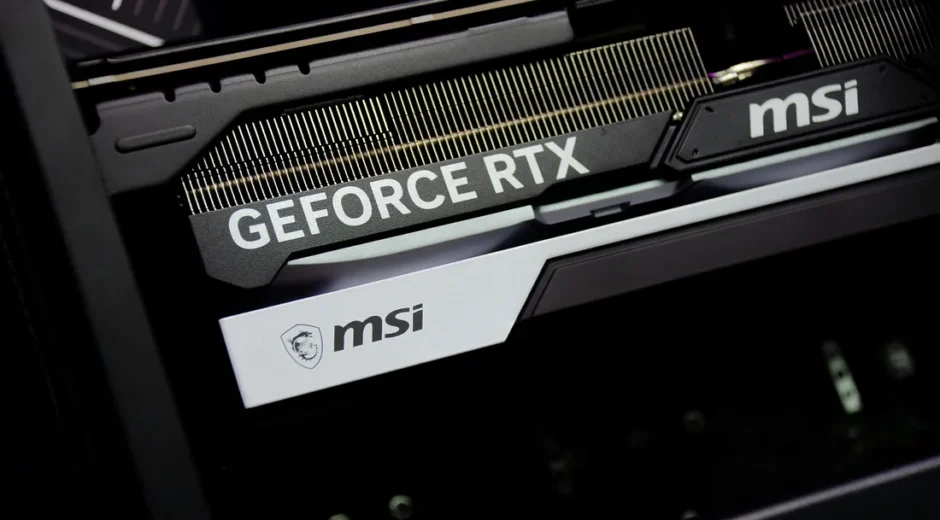NVIDIA has once again set the tech world abuzz with the launch of its RTX 50 GPU series. While 2024 has been a year of groundbreaking algorithmic advancements, with LLMs achieving new milestones almost every week, the importance of cutting-edge hardware cannot be overstated. These hardware innovations are the backbone that enables us to push past limitations and fully harness the potential of these advanced models.
In this post, we’ll dive into the world of NVIDIA GPUs, helping you understand which one is the best fit for your needs. Whether you’re a gamer, a creator, or an AI enthusiast, we’ll break down the key features, performance metrics, and cost considerations to guide your investment.
but before that, you must be (I assume) NVIDIA is not the only GPU provider
What are some top GPU brands?
- NVIDIA: Leader in GPUs for gaming, AI, data centres, and professional graphics, known for CUDA, Tensor Cores, and DLSS.
- AMD: Competes in gaming and data center GPUs with Radeon and Instinct series, strong in price-to-performance.
- Intel: Expanding into discrete GPUs with Arc series and data center GPUs like Ponte Vecchio.
- Qualcomm: Dominates mobile GPUs with Adreno, powering Snapdragon chips for smartphones and AI.
- Apple: Designs custom GPUs for iPhones, iPads, and Macs, optimized for performance and efficiency.
Today, in this post, we will talk about some important GPU series released by NVIDIA and which one you should opt for
Why are we discussing only NVIDIA? Because it’s GPUs are mostly compatible with any type of usecase compared to others and are more widely used
We will be discussing different NVIDIA GPU families and then a head-on comparison between them on cost, performance, GenAI specific, etc
1. GeForce RTX Series (Most Popular)
Target Audience: Gamers, creators, and AI enthusiasts.
Ray Tracing: Real-time lifelike lighting and reflections.
DLSS (Deep Learning Super Sampling): AI-powered upscaling for performance and quality.
Tensor Cores: Accelerate AI and deep learning tasks.
CUDA Cores: High-performance parallel processing.
Examples: RTX 4090, RTX 4080, RTX 4070 Ti.
There are high chances your personal laptop (if purchased recently) has this GPU
2. NVIDIA RTX Professional Series (Best for visual tasks)
Target Audience: Professionals in AI, design, and engineering.
Certified Drivers: Optimized for CAD, 3D rendering, and AI.
High Memory Capacity: Up to 48 GB GDDR6.
Ray Tracing & Tensor Cores: Enhanced rendering and AI capabilities.
NVLink Support: Multi-GPU scalability.
Examples: RTX A6000, RTX A5000.
3. NVIDIA A-Series
Target Audience: Data centres and enterprises.
Tensor Cores: Optimized for AI and deep learning.
High Memory Bandwidth: Up to 80 GB HBM2e with 2 TB/s bandwidth.
MIG (Multi-Instance GPU): Efficient resource utilization.
FP16/FP32 Precision: Supports mixed-precision AI training.
Examples: A100, A800.
4. NVIDIA H-Series (e.g., H100)
Target Audience: Enterprise and hyperscale AI workloads.
Transformer Engine: Optimized for large language models (LLMs).
FP8 Precision: Reduces memory usage, boosts AI performance.
High Memory Capacity: 80 GB HBM3 with 3.35 TB/s bandwidth.
4th Gen Tensor Cores: 3x faster AI performance.
Examples: H100.
5. NVIDIA Blackwell Series (The latest)
Target Audience: Gamers, creators, and AI developers.
DLSS 4: AI-driven multi-frame rendering.
FP4 Precision: Efficient for generative AI models.
NVIDIA NIM Microservices: Prepackaged AI models.
High AI Performance: Up to 3,352 TOPS for compute tasks.
Examples: RTX 5090, RTX 5080.
6. NVIDIA Jetson Series
Target Audience: Edge AI, embedded systems and robotics.
Compact Design: System-on-module (SoM) for embedded use.
AI Acceleration: Tensor Cores for edge workloads.
Low Power Consumption: Ideal for IoT and robotics.
Examples: Jetson Orin, Jetson Xavier.
7. NVIDIA DGX Systems
Target Audience: Enterprise AI and research.
Integrated AI Platform: Combines multiple GPUs (e.g., A100, H100) with optimized software.
High Performance: Designed for large-scale AI model training and inference.
NVIDIA AI Enterprise Suite: Pre-configured AI tools and frameworks.
Examples: DGX H100, DGX A100.
8. NVIDIA T-Series (e.g., T4)
Target Audience: Data centers and edge computing.
Low Power Consumption: Optimized for energy-efficient AI inference.
Tensor Cores: Accelerates AI workloads.
Versatile Form Factor: Suitable for servers and edge devices.
So which GPU should you choose/buy?
This may depend on a lot of factors, especially the cost (you might not be able to afford the most expensive ones)
1. Cost
GeForce RTX Series: Affordable to mid-range ($500–$1,999)
RTX Professional Series: High-end ($2,000–$6,000)
A-Series: Expensive ($10,000–$15,000)
H-Series: Very expensive (~$30,000)
Blackwell Series: High-end ($999–$1,999)
T-Series: Mid-range ($1,000–$2,000)
Jetson Series: Affordable to mid-range ($20–$2,000)
DGX Systems: Very expensive ($200,000+)
2. Performance
GeForce RTX Series: High performance for gaming and entry-to-mid-level AI tasks
RTX Professional Series: Excellent for professional workflows and medium-scale AI
A-Series: Top-tier for large-scale AI training and inference
H-Series: Cutting-edge for massive AI models and enterprise workloads
Blackwell Series: High-end for GenAI and real-time rendering
T-Series: Optimized for AI inference and edge computing
Jetson Series: Efficient for edge AI and robotics
DGX Systems: Best-in-class for enterprise AI and research
3. Compatibility
GeForce RTX Series: Gaming PCs, workstations, AI frameworks
RTX Professional Series: Certified for professional software and AI tools
A-Series: Optimized for data centers and enterprise AI frameworks
H-Series: Designed for hyperscale AI and enterprise infrastructure
Blackwell Series: Gaming and AI development platforms
T-Series: Suitable for servers and edge devices
Jetson Series: Embedded systems and edge AI
DGX Systems: Fully integrated with NVIDIA’s AI ecosystem
4. Mobile Devices
GeForce RTX Series, RTX Professional Series, A-Series, H-Series, Blackwell Series, DGX Systems: Not designed for mobile devices
T-Series: Suitable for edge devices but not mobile
Jetson Series: Ideal for mobile robotics and edge AI
5. Running Huge LLMs (>100B Models)
GeForce RTX Series: Limited (up to 24 GB)
RTX Professional Series: Better but limited (up to 48 GB)
A-Series: Excellent (up to 80 GB HBM2e)
H-Series: Best-in-class (up to 80 GB HBM3, FP8 precision)
Blackwell Series: High-end (up to 32 GB GDDR7)
T-Series, Jetson Series: Not suitable for huge LLMs
DGX Systems: Ideal (multiple A100/H100 GPUs)
6. Ideal for Small LLMs (<10B Models)
GeForce RTX Series: Excellent (e.g., RTX 4090)
RTX Professional Series: Great for small LLMs and workflows
A-Series, H-Series: Overkill but highly efficient
Blackwell Series: Excellent for small LLMs and GenAI tasks
T-Series: Suitable for inference of small LLMs
Jetson Series: Limited but usable for edge AI inference
DGX Systems: Overkill for small LLMs
8. Best for Enterprise
A-Series: Large-scale AI training and inference
H-Series: Cutting-edge AI and hyperscale workloads
DGX Systems: Fully integrated AI platforms for enterprise and research
RTX Professional Series: Great for professional workflows and medium-scale AI
9. Best for Individual Use
GeForce RTX Series: Gamers, creators, and AI enthusiasts
Blackwell Series: High-end for individual AI developers
Jetson Series: Hobbyists working on edge AI and robotics
T-Series: AI inference-focused individual developers
One tip, if you can take some delays in inferencing, better buy a cheaper GPU and take a shot down on latency. Also, some models say HunYuan video or DeepSeek-v3 may require ample GPU memory. Going with a expensive GPU is not ideal. Better focus on quantity than quality.
Source: www.medium.com




